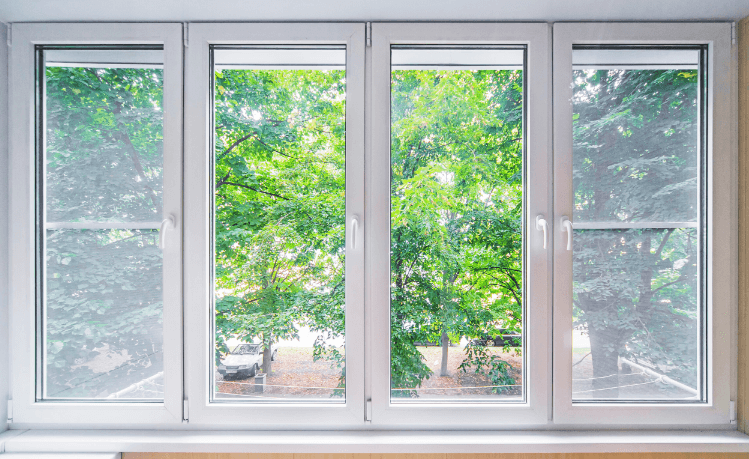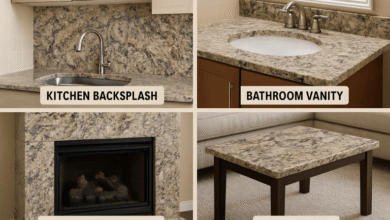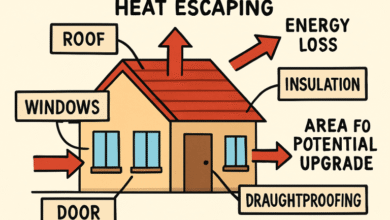Choosing the Best Window Material: Vinyl, Wood, or Fiberglass?

Table of Contents
Evaluating Vinyl Windows
Vinyl windows have surged in popularity due to their affordability and low maintenance needs. Made primarily from PVC, these windows resist rot, fading, and corrosion, making them a practical choice for many homeowners. For those seeking a reliable upgrade, considering a professional windows & siding window installation Fort Collins or similar expert installation can ensure vinyl windows perform their best. Vinyl frames are inherently energy efficient thanks to their insulating properties, and many modern styles come with multi-chambered construction for superior climate control.
Despite its strengths, vinyl cannot match wood or fiberglass for natural beauty or maximum lifespan. It’s available in limited color options—often only white or tan—and, while durable, extreme temperature swings can sometimes affect its shape. However, the cost savings and almost zero maintenance remain compelling for budget-conscious homeowners or rental property owners.
Why Consider Wood Windows?
Wood has a timeless appeal, and it is often chosen for its warmth, character, and versatility. Unlike other materials, wood windows can be stained or painted to match any home’s style, making them especially popular in historic renovations and upscale properties. Wood frames also offer exceptional insulation, providing natural thermal performance that supports energy savings year-round.
However, wood demands more upkeep than vinyl or fiberglass. Regular painting or sealing is necessary to prevent moisture damage, rot, or insect activity. Despite these requirements, many homeowners believe wood’s superior beauty and value outweigh the maintenance. When cared for properly, wood windows can last generations and be easily restored or refinished instead of replaced.
The Rise of Fiberglass Windows
Fiberglass windows have gained momentum in recent years thanks to their blend of durability and adaptability. These frames are extremely strong, resisting warping and weathering even in harsh environments. Fiberglass also expands and contracts at rates similar to glass, minimizing seal failure and energy loss over time. Many manufacturers offer fiberglass windows in a range of colors and finishes, with some mimicking the look of painted wood.
While the initial cost is higher than vinyl, fiberglass’s impressive resistance to fading, cracking, and temperature changes makes it a smart long-term investment. Fiberglass is often the best of both worlds for homeowners who want a low-maintenance option that doesn’t compromise appearance.
Key Factors: Energy Efficiency and Durability
Insulation and strength directly impact comfort and utility bills. According to the Department of Energy, all three window types—vinyl, wood, and fiberglass—can provide excellent efficiency when fitted with double or triple glazing, weatherstripping, and modern coatings. Still, window frame material influences performance, especially over time. Fiberglass stands out for resisting deformation, while wood insulates well but needs ongoing protection. Vinyl frames are less costly but can be vulnerable to warping in extreme climates.
Durability should match local weather: coastal homes benefit from rot-resistant fiberglass, while dry climates are more forgiving for wood and vinyl.
Aesthetic and Maintenance Considerations
Homeowners looking to boost curb appeal should closely consider how each material ages and what it takes to keep them looking their best. Wood windows undeniably add a luxurious touch and can be refreshed with new paint or stain, adapting to changing tastes. On the other hand, vinyl and fiberglass maintain their factory finish for decades with only simple cleaning—an appealing prospect for busy families.
According to Houzz editorial guides, the best-looking window complements both interior and exterior design while aligning with how much maintenance the homeowner is willing to take on.
Cost Comparison and Return on Investment
Upfront costs vary widely. Vinyl is the most budget-friendly choice, making it accessible for full-home replacements or rental upgrades. Wood typically carries the highest upfront price, paired with ongoing investment in upkeep. Fiberglass costs more than vinyl but is closer to wood in price, with the payoff of less maintenance and greater longevity.
Regarding resale value and lasting performance, wood windows can increase perceived value in certain neighborhoods, while fiberglass and vinyl offer savings in energy and upkeep. Weighing the total cost of ownership—not just the installation price—will help most homeowners make the best decision for their finances and lifestyle.
See also: Creative Ways New Home Sales Professionals Build Trust With Buyers
What’s the Right Choice for Your Home?
There’s no universal “best” material—it depends on each homeowner’s specific needs. Evaluate your local climate, maintenance preferences, and style priorities as you weigh the options. Vinyl balances practicality and cost, wood offers unmatched charm, and fiberglass delivers durability with minimal maintenance. Consulting with installation professionals and reviewing product warranties will further guide your investment to ensure lasting comfort and value.



